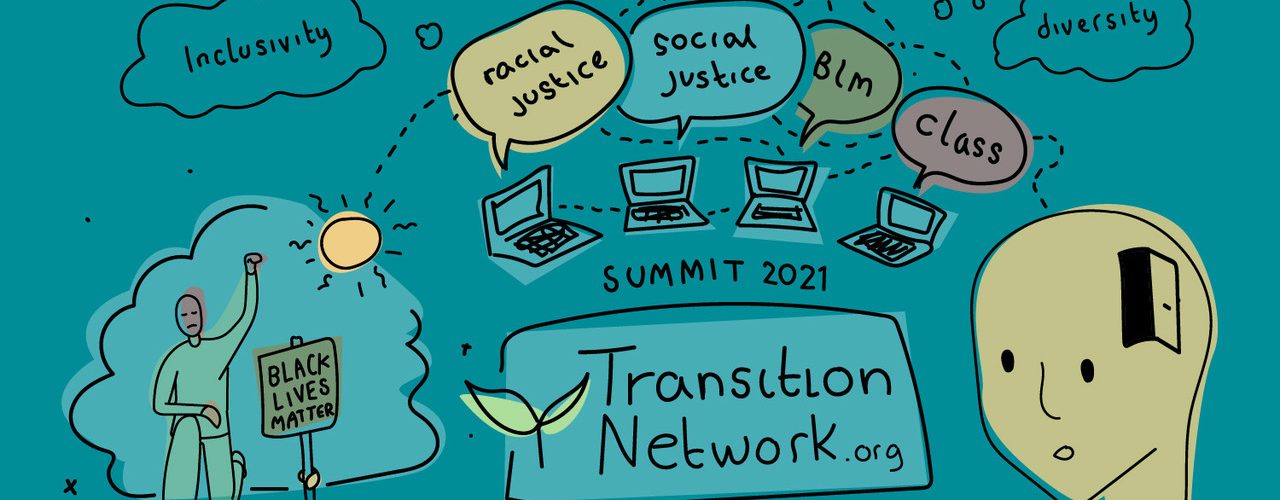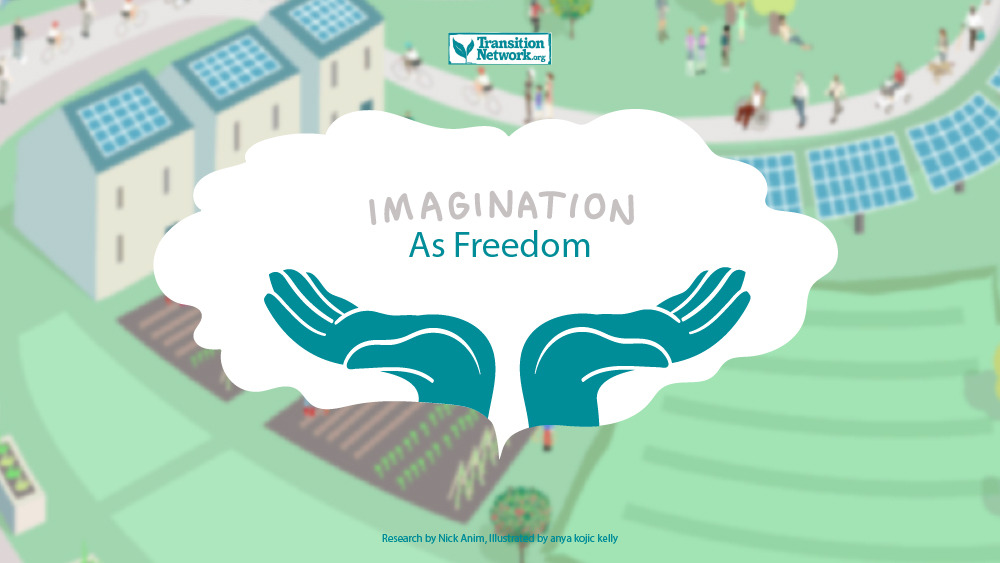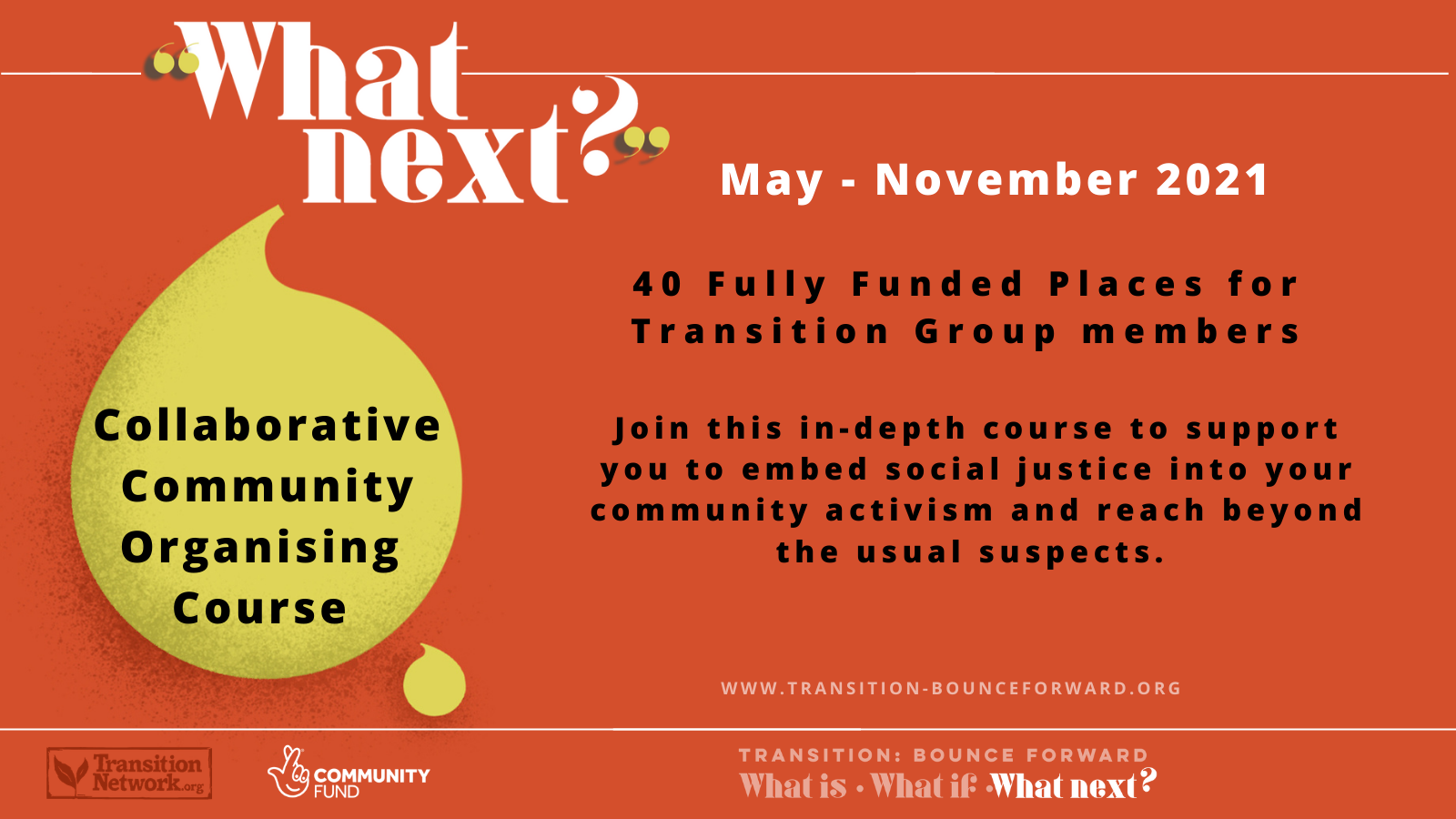
The What Next Summit: a pivotal moment for social justice in Transition?
Nick Anim, Transition Bounce Forward team member and researcher, shares his first reflection piece on the What Next Summit. Was it a pivotal moment for the UK Transition Movement? Did it mark the beginning of social justice taking centre stage in Transition?
Lost in Transition: a brief introduction
Like many environmental groups, the Transition Network has long been challenged by what I sometimes refer to as an affliction of ‘diversity deficiency syndrome’. In 2010, a survey by the Transition Network Diversity Project (TNDP) showed 95% of respondents described themselves as White European, and 86% were educated to a post-graduate degree level. Today, more than a decade since that survey, I would suggest, with a high degree of certainty, that an equivalent survey would probably return very similar results. Despite a principled commitment to ‘promote inclusivity and social justice’, despite much academic research on the movement, despite significant media attention, and despite widespread praise and publicity from various influencers, for all the positive energy of its activists, Transition groups typically find it difficult to expand beyond the ‘low-hanging fruit’ or ‘usual suspects.’ Why? Why are inclusion and diversity so often lost in Transition?
There is, of course, no single or indeed simple answer to that question. On that basis, what I propose to do in the coming weeks and months, is to offer a series of interrelated blogs, think-pieces, and sometimes perhaps even more in-depth essays which examine that question from different perspectives. I will be writing from my positionality as both a long-term activist within Transition, and an academic researcher. Further, for full disclosure, I must also point out here that I was part of the nascent Transition: Bounce Forward (TBF) team that helped shape and deliver the recent ‘What Next? Summit’. It should come as little or no surprise, then, when I say that some of what I write will draw references from particular sessions or topics of interest and relevance covered during the summit. In that context, bear in mind that what I offer will be my personal reflections on the contents of some presentations as well as outtakes from post-session conversations. I do not wish or propose to represent the diverse viewpoints and experiences of the TBF family, or any other members of the broader Transition Network.
So, that said, I have two main aims in proposing this series of pieces. First, I would like to contribute to the continued development of the movement through critical self-analyses. Second, I hope that some of what I offer might help various groups better understand why they face certain challenges of inclusion and diversity, and how they may address them. In relation to those two aims, I will begin here with a light-touch reflection on the summit.

The What Next? Summit: A Renaissance of Transition?
Under the organising call of “building community power through imagination and action”, the What Next? Summit in March marked what I believe to have been a seminal event, a renaissance of sorts, in the evolution of the Transition Network. I say that not because the government’s shape-shifting responses to the Covid-19 pandemic forced us to reinvent the traditional Transition Network Conference wheel, and not because the period from conception-planning to delivery of the summit was just under two months, or because it attracted almost 2000 attendees over a three-week period, and definitely, definitely not because we got very positive feedback in anonymised polls at the end of each session. No! Yes, of course every one of those achievements was incredibly gratifying for the team. However, from my point of view, the summit was seminal for two particular reasons.
First, our planning and delivery approach was informed by some profoundly challenging questions and conversations about how we, being an environmental movement that is primarily focused on community sustainability and resilience, can and must do much better in fulfilling a core principle and promise to ‘promote inclusivity and social justice’. In other words, we acknowledged that the primacy of ecological concerns has tended to relegate the pressing claims and demands of social justice to an incidental or accidental after-thought. At best, what that means is that instead of seeing and consequently treating matters of environmental sustainability and social justice as interlinked systemically and needing to be turned around simultaneously, they are often viewed as parallel problems that are best addressed by dedicated organisations and movements. At worst, they are seen as competing issues that must be segregated hierarchically. Such an approach means that many socioeconomically marginalised individuals and groups, for whom persistent inequalities may quite often dictate the texture of everyday life experiences, expectations or outcomes, are unlikely to join Transition groups preoccupied with ecological matters.
With that in mind, a central aim of the summit was not just to promote, but also to convey and, perhaps most importantly, to exemplify our deep commitment to values of inclusion, diversity and social justice. We therefore agreed on those values as compasses to guide our decision-making processes in choosing the themes, speakers, and keynote listeners. Yes, the summit covered topics such as the climate emergency and food systems, which may be seen as the staple diet of Transition thinking and doing. Yes, some of our speakers and presentations were located within the catchment area of the Transition Network. And yes, of course we did what I think Transition does really really well, and that is to tell a blizzard of inspiring stories from various groups about some amazing countercultural and disruptive initiatives that, on closer inspection, suggest another world is not only possible, but is being birthed right under the radar of our dominant systems and realities.
In addition to those ‘Transition norms’, our invited list of speakers and keynote listeners were chosen to reflect a broad spectrum of demographic diversity that could bring invaluable perspectives and experiences from beyond the network. This was important to help challenge, possibly unsettle, but ultimately enhance the evolution of Transition thinking and doing. As such, when planning each summit session, we wrestled hard with three basic questions. First, who are the thought-leaders on this theme? Second, who is doing really innovative and transformative ‘grunt work’ in different communities on the matter? And finally, in what ways can or will their contribution inspire Transition groups?
On that last point, our ambition was not only to inspire Transition groups to think outside the box in terms of the types of community-based initiatives that they could pursue. No! A kindred ambition was to encourage and provoke critical reflections within the groups, reflections that would highlight the importance of nurturing a recognition and better understanding of the so very often unseen or sometimes overlooked and, frankly, even intentionally-avoided issues that may threaten community sustainability and resilience. By that I refer to issues such as race and class tensions, unequal power relations, social exclusion and marginalisation, cultural heterogeneity, transient populations, the list goes on and on and on. Whilst such issues may call to question notions of unity in community and hence undermine social cohesion in any given locality, particularly amplified in dense multicultural urban settings, Transition initiatives can, I repeat can, in the movement’s unique spirit and culture of positive visioning and ‘the power of just doing stuff’, help to redress them. But of course, ‘can’ is doing quite a lot of heavy lifting in that thinking. The conversion rate from ‘can’ to fulfilling any latent potential held by Transition initiatives as local catalysts for relocating unity within any community, points us to the importance of effective communications and community engagement strategies. Recognising that, we decided, at the outset of planning the summit, to adopt a no-holds-barred approach and put on key sessions and workshops which addressed those problematic issues head-on. In doing so, the message to all groups was clear; we have to become more proactive in dealing with issues of inclusion, diversity, and social justice in our community initiatives.
And so, now, to wrap up this brief sketch on the first reason why I believe the What Next? Summit sparked a seminal turn in the evolution of Transition. I would say that although matters of inclusion, diversity, and social justice have always been on the list of principles and organising concerns for the movement, many, if not most, affiliated groups have not had much success attending to them. At best some groups have tried and failed, and, at worst, many others have adopted a de facto passive approach to engaging those matters. However, with the visceral cries and demands for greater social justice, more equality, and better recognition and belonging in a world that appears increasingly characterised by unrelenting othering, global protests during the summer of 2020 under the rallying cry of ‘Black lives matter’ impressed on everyone an undeniable sense of moral urgency; any visions for a transition to the green and pleasant lands of a future world transformed, shall not, cannot, and will not succeed with the persistence of social and global justice concerns. On that note, although the many groups that make up the Transition Network are autonomous due to a decentralised and non-hierarchical organisational structure, the summit offered a platform, a portal to a paradigm change across the movement; a change that says we are not solely about ecological sustainability, but also about social justice. From that point of view, then, the ‘What Next? Summit’ was when social justice, which had seemed somewhat ‘lost in Transition’, was finally found and centred in a call to action. As “Jim” (not their real name), who attended some sessions told me in a very recent email:
“I’m just reaching out to you and the team to say a big thank you for the rich and vital conversations about social justice during the summit. I’ve finally managed to finish watching the sessions that I couldn’t come to. The word courage came up in my head a few times, and I want to thank you and the team for the courage in ensuring that our movement has these conversations. To me, seeing Black and Asian people take the lead on conversations about social justice was the most rewarding part of the Summit. Thank you.”
Similarly, “Jane” (again, not their real name), who came to all the summit sessions said:
“The summit was absolutely brilliant, mind-blowing in fact. I’ve been part of Transition Towns since the early days and I’ve been to a couple of really good conferences in the past, but this summit was the first time that it really brought together the environmental agenda with other social agendas. I learned so much.”
Imagination as Freedom
Beyond the seminal pivot towards a greater recognition of, and more honest discussions about, challenging matters such as unequal power relations and social justice, which I have often thought Transition groups, broadly speaking, find quite difficult to deal with, the second reason why I believe the ‘What Next? Summit’ marked something of a renaissance for the Transition Network, was the focus on the power of imagination. Ahead of the summit, an invitation was sent out for people to “Join Transition Network on a journey to a radically different future using the power of imagination and collective action”. The focus on imagination was strategically linked to Rob Hopkins’s book ‘From What is to What If: Unleashing the power of imagination to create the future we want’.
The call to exercise a community’s collective imagination has been one of the Transition Network’s unique repertoires and processes of/for collective action since its inception. In that respect, community organisers/members are encouraged to use positive visioning approaches to ‘back-cast’ from a future date to the present. This has proven to be a very powerful method of harnessing creativity and common interests within communities.

The encouragement given in some sessions of the summit for presenters to engage with topics around the power of imagination, served to highlight how our thinking, being, and becoming are constantly constrained over time. That is to say that our imaginations, once untamed as children, are progressively marshalled through the dominant education, social and economic systems to conform to the certain ways of so-called “rational actors”. Such taming of the imagination, it can be argued, is the reason for humanity’s failure to address the worsening climate and ecological crisis, and the rampant over consumption of resources. It is, perhaps above all, essentially a failure of our elected officials and governments to pursue alternative and better ways to orchestrate our relationship with nature and indeed with ourselves. And so it is that, despite warnings from the scientific community for more than fifty years, we have failed to imagine the worst could happen or happen soon. And now, despite all the scientific evidence, we are told that the scale and pace of the changes required to reduce greenhouse gas emissions enough to avoid 1.5°C of global warming, the lower temperature threshold in the Paris Climate Agreement is unrealistic. To be unrealistic, is to be imaginative and creative. And we must remember that change has never been the preserve of realists. It is on that note that I believe the ‘What Next? Summit’ was quite a radical invitation to rewild our collective imaginations. The question then becomes, what next? How do we turn those visions from rewilded imaginations into reality? How might ideas of initiatives for environmental sustainability and social justice drive transformative collective action? Well, simple. To recall the maxim that drew me to join and then later on conduct my research on the Transition Network:
“If we wait for the governments, it’ll be too little, too late; if we act as individuals, it’ll be too little; but if we act as communities, it might just be enough, just in time.”
Needless to say, we fully recognise that such sentiments must be backed up with deeds, and not just be allowed to rest in peaceful memory of the summit’s aspirations. So, with support from the National Lottery Community Fund (NLCF), the TBF project has, since November 2020, managed to fund 112 community-based projects, consisting of 38 major, and 74 smaller Transition initiatives in England that, against the backdrop of the Covid pandemic, will help groups better attend to local environmental sustainability concerns and some of the most persistent issues of social justice and marginalisation within their local communities. Further, again with support from the (NLCF), we have arranged an in-depth community organising course, to help groups to reach beyond the usual suspects and work effectively with power and difference, diversity and inclusion at the local level.

Next blog post coming soon.